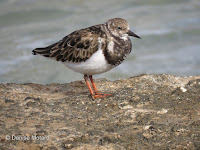BIRDING ON HAWAII
For BIRDING SPECIFIC TO HAWAII, please check further down below.
BIRDING GENERAL INFORMATION
Birdwatching, or birding, is the observation of birds as a recreational activity. That being said, there are all kinds of levels of involvement in this activity. Some will make a distinction between the two terms saying that birding is a more ‘serious’ activity than birdwatching. Birdwatching is also good for the economy and the environment (in general).
Some countries – small countries in Europe for example – have an activity called ‘twitching‘. It is a British term whereby a person will try to find a rarely observed bird, often traveling long distances. Ornithology is the scientific study of birds.
Monitoring the birds involves the counting of species and birds within species as a means of assessing the health of bird populations. Many research centers have dedicated resources to maintain records of bird populations through the years. This helps decide whether to protect a bird by giving it a special status such as ‘threatened’ or ‘endangered’, etc., which then allows the allocation of funds for conservation.
Parts of this monitoring are the ‘bird counting‘ activities at different times of the year, for example the Christmas Bird Count and the Great Backyard Bird Count. Another counting activity is the Big Year, a competition in North America among birders where the goal is for participants to identify as many species of birds as possible within a given time. A comedy, The Big Year, was made about this activity.
 |
| Hawaiian stilt, Hamakua Marsh, Oahu |
Bird Pishing: ‘Pishing’ means to imitate a bird sound or call in order to attract them. More information on this birding technique can be found here, including how to use it responsibly.
Bird Photography can be a professional or amateur activity. Feeding the birds is one way of attracting them close enough to photograph them. It is important to have a zoom and a tripod for good bird photographs. Binoculars are also an essential tool for birders. Photography equipemnt can easily become very expensive. Bird cams are becoming very popular too. Here’s a website dedicated to the observation of nesting birds via web cams: http://www.viewbirds.com. The hatching of these particular bald eagle eggs has apparently been viewed millions of times. The photographers below were patiently waiting for the first Japanese tit appearance in March. This bird is similar (in appearance) to the Black-capped chickadee.
 |
| Patient bird photographers in Kyoto, Japan |
Many of the birds shown on this website for the state of Hawaii are easy to observe. Some can be found in cities, others in parks and along trails, or in some publicly accessible refuges, reserves or sanctuaries.
There are many commercial birding tours available for the main Hawaiian islands.
Hawaii State Parks are located in various bird habitats and many species can be observed in those publicly accessible areas.
The State of Hawaii also has a Natural Area Reserve system, consisting of 21 reserves on the five main islands. They are located in various habitats and publicly accessible for free as well. For more information on what is accessible, please check the Nā Ala Hele Trail & Access Program.
There is a choice of birding tours available in the Hawaiian Islands, for various levels of birding. Some are free and organized by non-profits, for example the HAWAII AUDUBON SOCIETY. Their website has excellent Birding Guides for the five main islands. Many endemic species are rare and endangered, and can only be observed in mountainous rain forests at high elevations.
 |
| Ruddy Turnstone, regular winter visitor |
Access varies depending on various factors (for example the nesting period of vulnerable species), so it’s safer to check first with appropriate management before planning a visit.
Hakalau Forest NWR (Mauna Kea east slope, Big Island)
Hanalei NWR (part of the Kauai National Refuge Complex)
Hulē’ia NWR (Kauai)
James Campbell NWR (Oahu, north east point)
Kakahaia NWR (Molokai)
Kealia Pond NWR (Maui, near Kihei)
Kilauea Point NWR (Kauai, north east point)
Oahu Forest NWR (Oahu, northern Ko’olau Mountains)
Pearl Harbor NWR (Oahu)
HAWAII GARDENS: If you are a garden lover there are many great gardens in Hawaii you can visit, and where you can also observe birds at the same time.
ADDITIONAL INFORMATION FOR BIRDING ON OAHU:
A good spot on Oahu to observe the Great Frigatebird is at Makapu’u, where the cliff creates favorable soaring conditions thanks to ascending winds. One easy way to check when those winds are favorable for observation is by accessing the website of the Hawai’i Paragliding Association, for their map of paragliding sites on Oahu, and for their weather maps as well. The Makapu’u trail is not far from Honolulu, is paved and relatively short and easy, and usually has enough parking. Another advantage of that trail is that it’s a good location to watch humpback whales in the winter.
The Lyon Arboretum in the Manoa Valley, adminstered by the University of Hawaii, offers good opportunities to watch several forest species, including some endemic ones.
ADDITIONAL INFORMATION FOR BIRDING ON THE BIG ISLAND:
Hawaii Volcanoes National Park: many trails in the park offer good birding opportunities for birds such as the Nene and the different introduced species of pheasants.
The Kipuka Puaulu (Bird Park) Trail is part of the Hawaii volcanoes national park and a 'ohi'a forest. Several bird species such as pheasants and small forest birds can be observed there.
The Volcano Golf Course is also a good spot to observe the Nene.
The Hawaii Birding Trails is a network of 13 birding 'hotspots' across the Big Island.